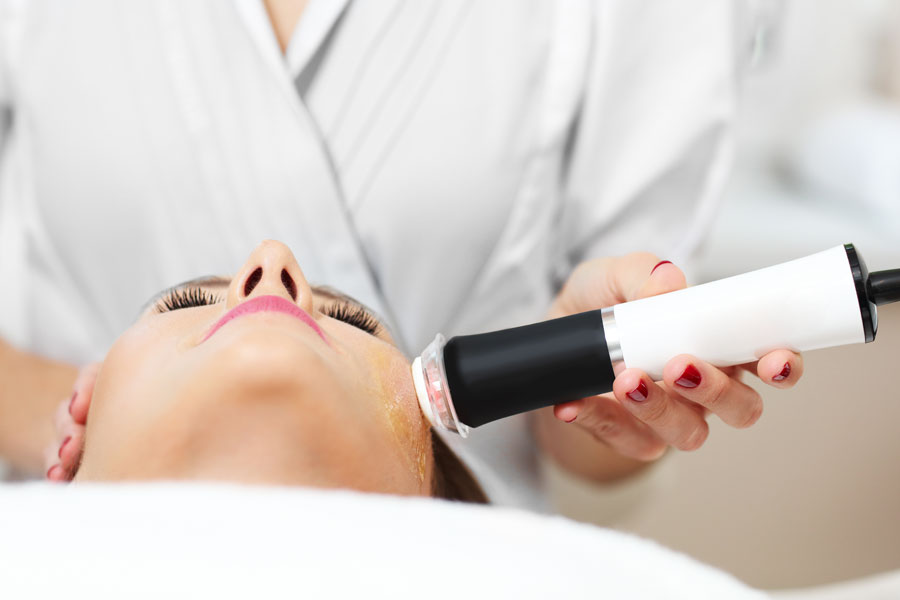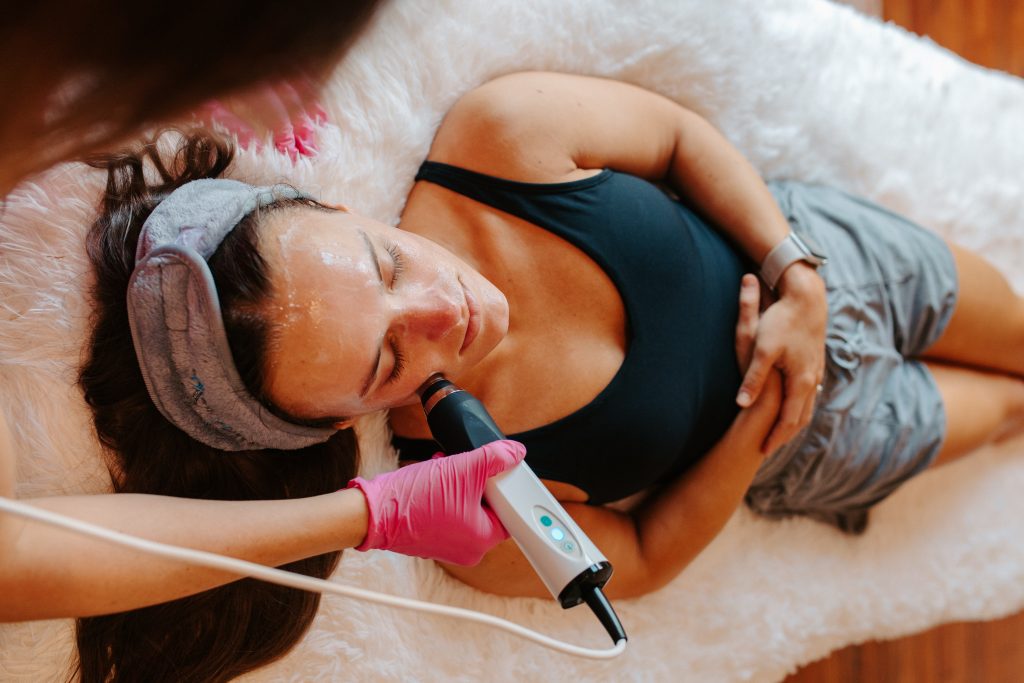How to Protect Skin from Sun Damage: An Expert Guide
Written by: Erin Sevigny
Summer- the season we wait all year for. From vacations with loved ones to backyard barbecues, there’s nothing like summer. However, unless you’re vigilant, those sunny days can turn into a nightmare for your skin. Knowing how to protect yourself from the sun not only keeps you looking and feeling your best but also helps you lower your risk of skin cancer and signs of premature aging.
At Franklin Skin Studio, we know that protecting your skin extends beyond seasonal skincare trends. Keep reading to learn how to protect your skin from sun damage.
10 Sun Safety Tips to Protect Your Skin
1. Sunscreen: Apply and Reapply
Applying sunscreen provides protection against the sun’s rays, but how much is enough, and what kind should you buy? Follow these quick guidelines:
- Make sure to use enough. You don’t just need to know to protect your face from sun damage. Apply a thick layer of sunscreen everywhere the sun may hit your body. The best rule of thumb is to cover yourself in about one shot glass’ worth of sunscreen( about three tablespoons).
- Choose the right kind. Sunscreen comes in two types: chemical and mineral. Both protect your skin, but chemical lotions absorb the sun while mineral lotions reflect it. If natural ingredients are important to you, choose a mineral lotion.
- Apply frequently in all weather. UV rays reach your skin whether it’s sunny or overcast. Apply sunscreen liberally before heading out for the day and every two hours after that, even when the sky is cloudy.
2. Seek Out Shade
When the sun is at its peak, usually between 10 AM and 4PM, it’s best to find some shade. This can be under a leafy tree, a wide-brimmed hat, or a beach umbrella. Shade provides a refreshing respite from the heat and crucial protection from harmful UV rays. Seeking shade can significantly reduce your risk of sunburn and long-term skin damage, allowing you to enjoy the outdoors while protecting your skin.
3. Take Precautions Around Sand and Water
Sand and water reflect the sun’s rays, amplifying your exposure to UV radiation. If you’re spending time at the beach or by the pool, it’s crucial that your learn how to prevent sun damage in these settings. The reflective nature of these surfaces can quickly lead to sunburn, even when you’re under an umbrella or partially shaded. To stay safe, apply broad-spectrum sunscreen liberally and frequently, wear protective clothing, and find that refreshing shade when possible. (And remember, if you wait to feel a burn on your skin, it’s too late.)
4. Cover Up with Protective Clothing
One of the most effective ways to protect your skin from the sun is by wearing protective clothing – even when in direct sunlight. Long-sleeved shirts, pants, and wide-brimmed hats offer excellent coverage and can be both stylish and functional. Look for clothing with a high Ultraviolet Protection Factor (UPF) rating, which indicates how effectively the fabric blocks UV rays.
Opt for protective clothing that’s:
- Tightly woven, without holes that could let sunlight through.
- Breathable but covering most of your skin, such as long-sleeve shirts and pants.
- Made with sun protection built right in, called Ultraviolet Protection Factor(UPF).
5. Opt for Protective Accessories
Summer skincare essentials go beyond sunscreens and protective clothing. Sunglasses with UV protection shield your eyes from harmful rays and may help prevent cataracts, while also protecting the delicate skin around your eyes from sun damage. Wide-brimmed hats or caps with neck flaps provide extra coverage for your face, ears, and neck, which are common areas for sunburn.
6. Avoid Sun Exposure During Peak Times
7. Minimize Time in the Sun
Want to know hot to protect your skin from the sun naturally? The answer is easy: don’t spend too much time in it. While it can be tempting to go outside and soak up the ray’s as much as possible, try to find a healthy balance. Throughout the sunny seasons, plan your daily routines and socialize around time outdoors and indoors. A walk with a friend might be paired with a coffee at a cafe together. A daytime hike could be followed by a matinee the next day.
8. Stay Hydrated
One of the most important tips on this list is staying hydrated. Drinking plenty of water helps regulate your body temperature and keeps your skin healthy and resilient. Dehydration can make your skin more susceptible to damage and hinder its ability to repair itself after sun exposure. Make it a habit to carry a water bottle with you and take regular sips throughout the day, especially if you’re staying active or spending extended periods outdoors.
9. Take Precautions When on Medications
Certain medications can make your skin more sensitive to the sun, resulting in sunburn or irritation. Antibiotics, anti-inflammatory drugs, and even some over-the-counter medications can lead to unexpected reactions under sun exposure. Check the labels of your medications and consult with your healthcare provider if you’re unsure about their sun-related side effects. If your medications do increase your sun sensitivity, be extra vigilant about skin UV protection.
10. Facial Treatments: Proper Preparation and Aftercare
A skincare routine that includes facials keeps you looking and feeling fresh. Protecting your skin before an after treatments is an important part of that healthy skin routine. Prepare for a facial by cleansing your skin with a gentle wash – nothing abrasive or chemical – and staying out of the sun for about five days. Wear an SPF of 30 or higher if you need to be outside as sun damage can make your skin feel irritated during treatment. After treatment, practice proper facial aftercare: drink lots of water for hydration, stay out of the sun, and apply sunscreen daily. No matter how often you get a facial, protect your skin from the sun before and after treatment.
Unlock Healthy Skin with Franklin Skin Studio
Ready for radiant skin? At Franklin Skin Studio, we’re on a mission to help you look and feel your best. Whether we’re writing blogs about how to protect skin from sun damage or pampering you in our leading spa, we’ve got you covered.
Our cleansing, soothing treatments, such as oxygen facials and chemical peels, keep your skin glowing too. Contact us or learn more about our spa in Franklin, TN!
We offer services and skincare in Franklin with a wide range of skin care treatments to suit your needs. From hydrating facials to deep-cleansing treatments, rejuvenate and refresh your skin today! We carry Hydrinity, Face Reality and IS Clinical and can get you started on the right regimen today!
To speak to a Franklin Skin Studio skin care specialist, book an appointment for a facial, or find out about the kind of facial that would be right for you, give us a call at 615-509-4730 today.


